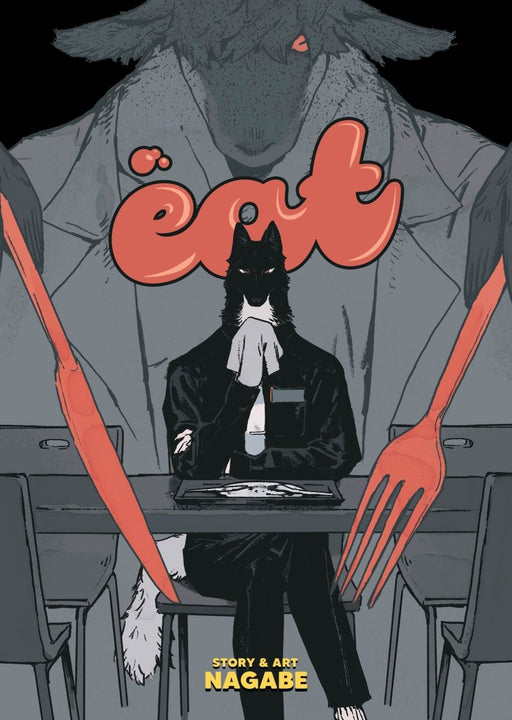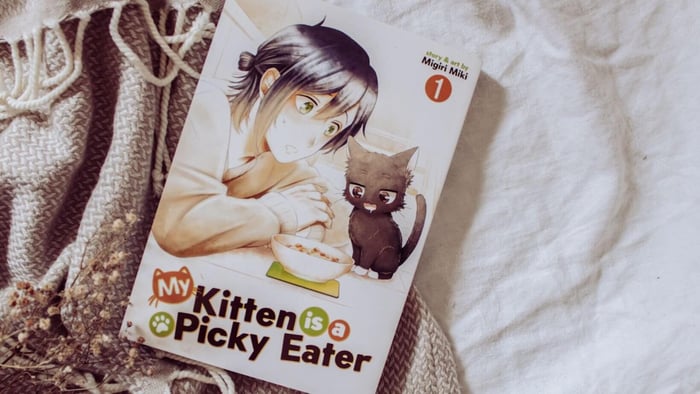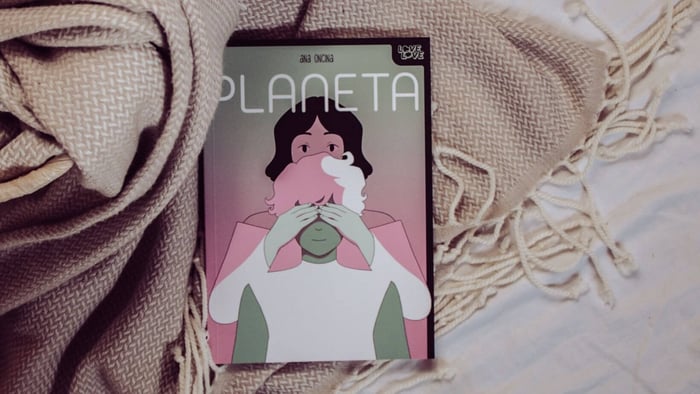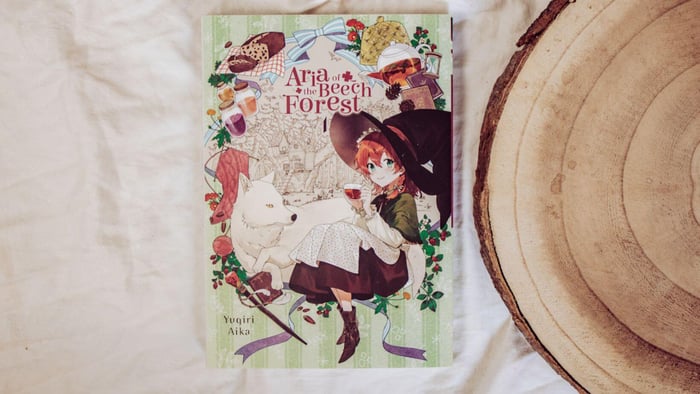Mangaka Nagabe is internationally best known for his series Siúil, a Rún: The Girl from the Other Side, but has also published numerous other works on the international market. Among them are a variety of one-shot volumes. One of these is EAT, which was recently released in the US by Seven Seas.
EAT was serialized from April 2022 to June 2023 in the Boys' Love magazine Be x Boy GOLD.
How was EAT?
Nagabe is known for his unique anthropomorphic Boys’ Love stories, which often go beyond pure romance and explore deeper, sometimes disturbing psychological themes. With EAT, he ventures into a distinctly different, more fetish-heavy direction.
In a world where anthropomorphic animals coexist, EAT centers on the strict law professor Lufria, a wolf, and his student Gulla, a massive, gluttonous goat. What initially seems like an unbalanced relationship between predator and prey is quickly turned on its head: Lufria is obsessed with the idea of being eaten, while Gulla loves nothing more than to eat. Their unusual relationship evolves into a game of desire, control, and the ultimate sacrifice.
Nagabe uses typical Boys’ Love tropes to explore a completely unconventional form of desire. It’s not about classic romantic love, but rather an extreme fascination with consumption in the literal sense. The roles of hunter and prey are reversed, and the story walks a fine line between fetish, horror, and existential questions.
Interestingly, the manga doesn’t deal explicitly with physical eroticism, but rather focuses on psychological and symbolic aspects of lust and control. This blend of disturbing fascination and emotional distance might not work for every reader.
Nagabe’s art style is unmistakable: delicate, almost sketch-like, with a slightly melancholic touch. It fits perfectly with EAT's dark themes. The characters’ body proportions are deliberately unusual: Gulla, the goat, is bulky and dominant, while Lufria, the wolf, appears thin and almost fragile. These physical contrasts emphasize the unusual dynamic of their relationship and create compelling visual tension.
Nagabe opts for a subtle yet impactful storytelling approach, which is reflected in the atmospheric design of the panels. The manga plays with light and shadow to intensify the dark mood and the underlying sense of threat. Especially in the moments when Lufria gives in to his longing, the detailed illustrations leave a strong impression on the reader.
The panels heavily rely on expressive facial expressions and symbolism, which effectively convey the unspoken desire between the characters. The scenes where Gulla reveals his appetite or Lufria surrenders to his dark longing are particularly intense due to Nagabe’s typical, almost sketch-like style. The focus on essentials ensures that attention is directed toward the characters’ emotions and body language, without being distracted by unnecessary details. This creates an atmosphere that oscillates between attraction, threat, and fascination.
As interesting as EAT's premise is, the story remains on a superficial level. The characters’ psychological backgrounds are only hinted at, and the manga is relatively short, leaving several aspects unexplored. Particularly problematic is the portrayal of the assault Lufria experienced during his high school years. Rather than processing it as trauma, it’s used merely as a springboard for his fetish, which feels morally questionable. A deeper engagement with this aspect could have significantly enriched the story.
Readers expecting a deep emotional connection or a classic love story are likely to be disappointed here. However, those looking for an unconventional, fetish-driven story that plays with taboos and unusual desires may find EAT appealing. The story is more of an experiment about desire and power than a traditional romance, which may be seen as either fascinating or too alienating, depending on the reader.
Is EAT worth reading?
EAT is a unique, provocative Boys’ Love manga that stands apart from traditional romantic narratives. It’s not for everyone, but for readers interested in unusual psychological dynamics, it offers an intriguing experience. Those looking for a deeply emotional or romantic Boys’ Love title, however, won’t find it here. In that case, Nagabe’s Monotone Blue might be the better choice.
Eat

€13,19
€14,99
From bestselling creator Nagabe (The Girl From the Other Side) comes an anthropomorphic Boys’ Love manga about dark, unspoken desires and the delicious temptation to give in.Professor Lufria has a secret: he finds pleasure in watching others eat. As a… read more


.png)


